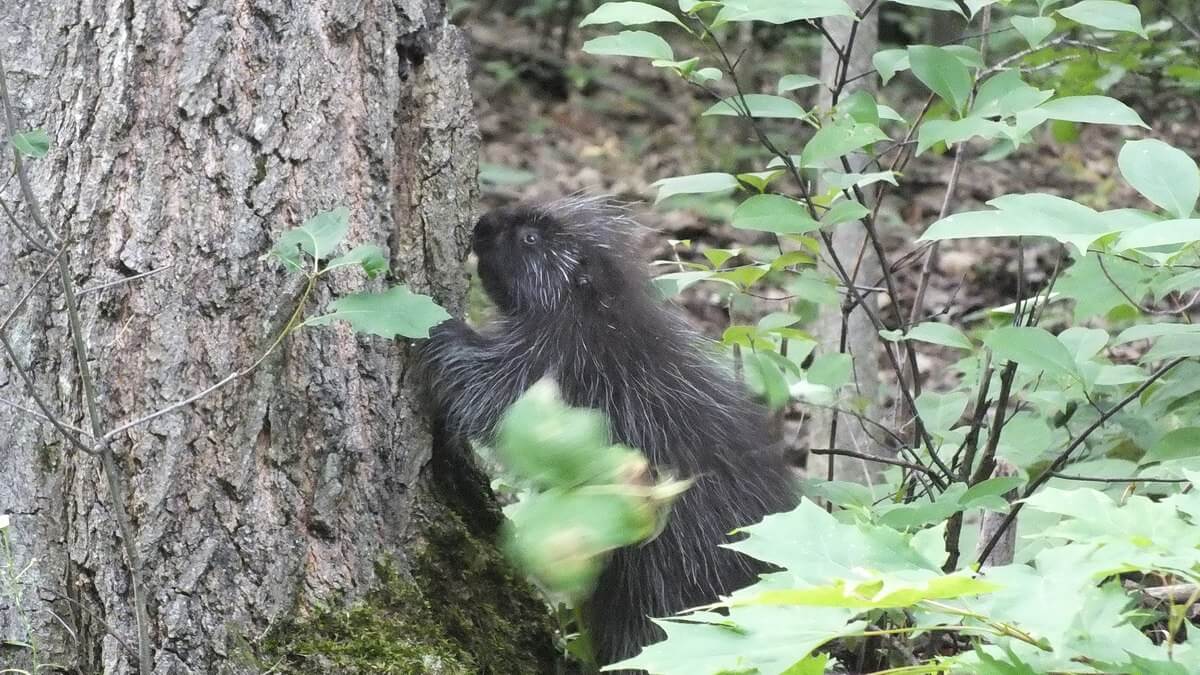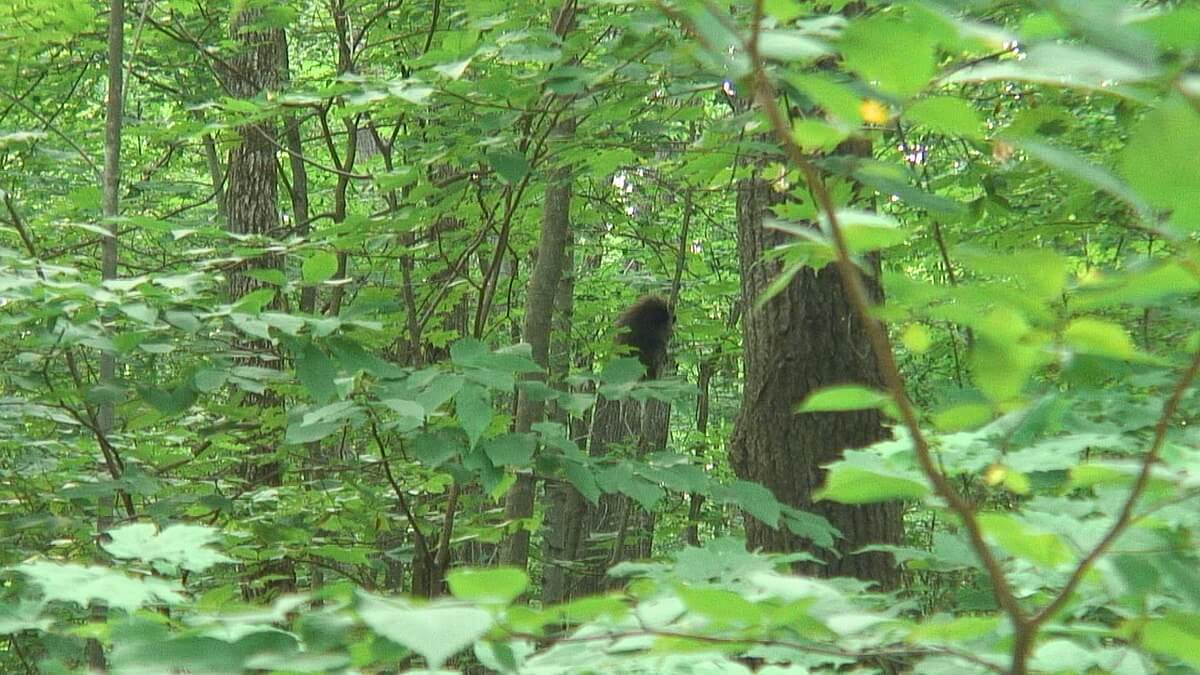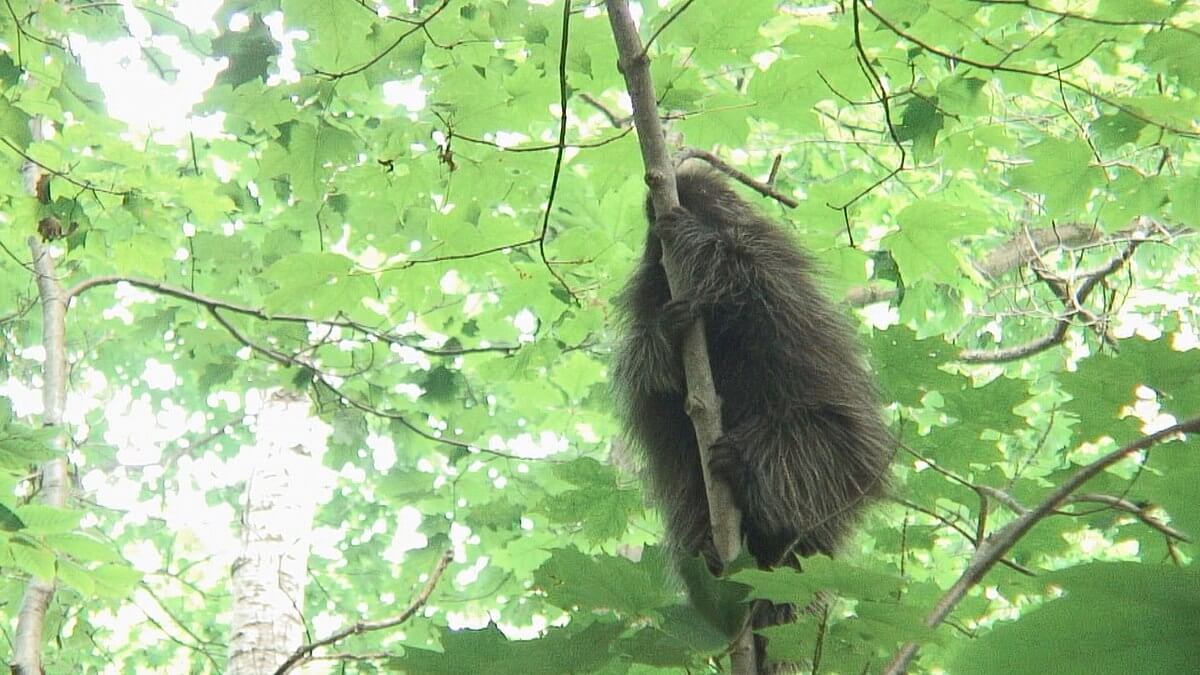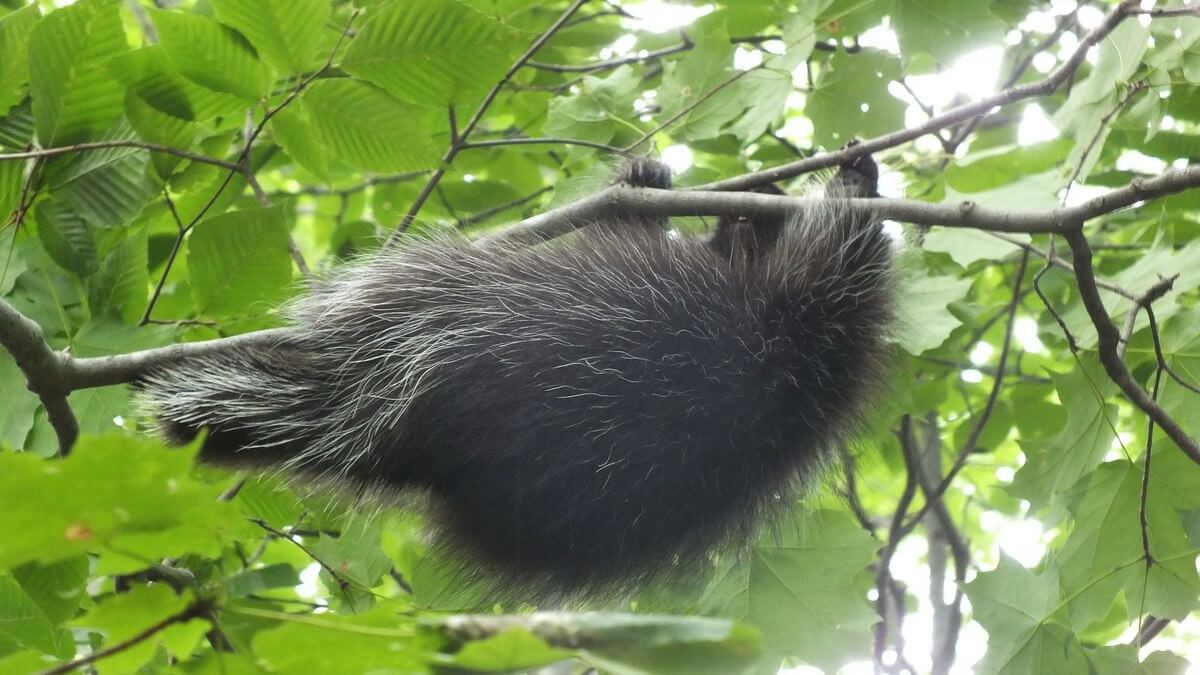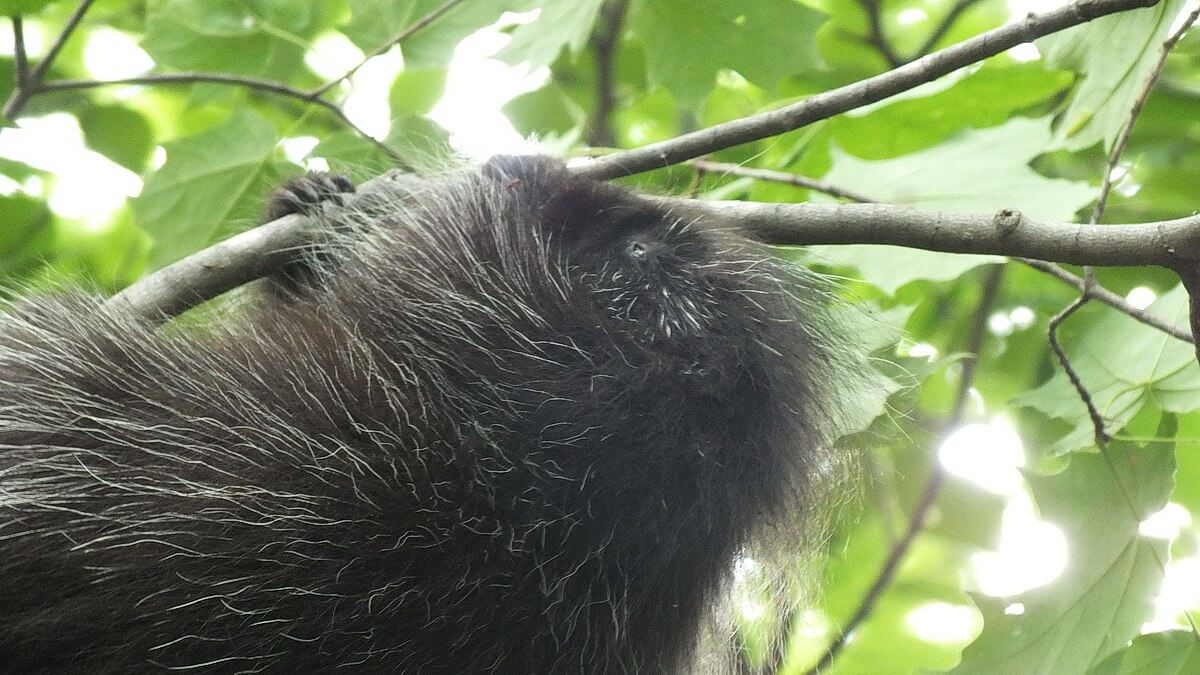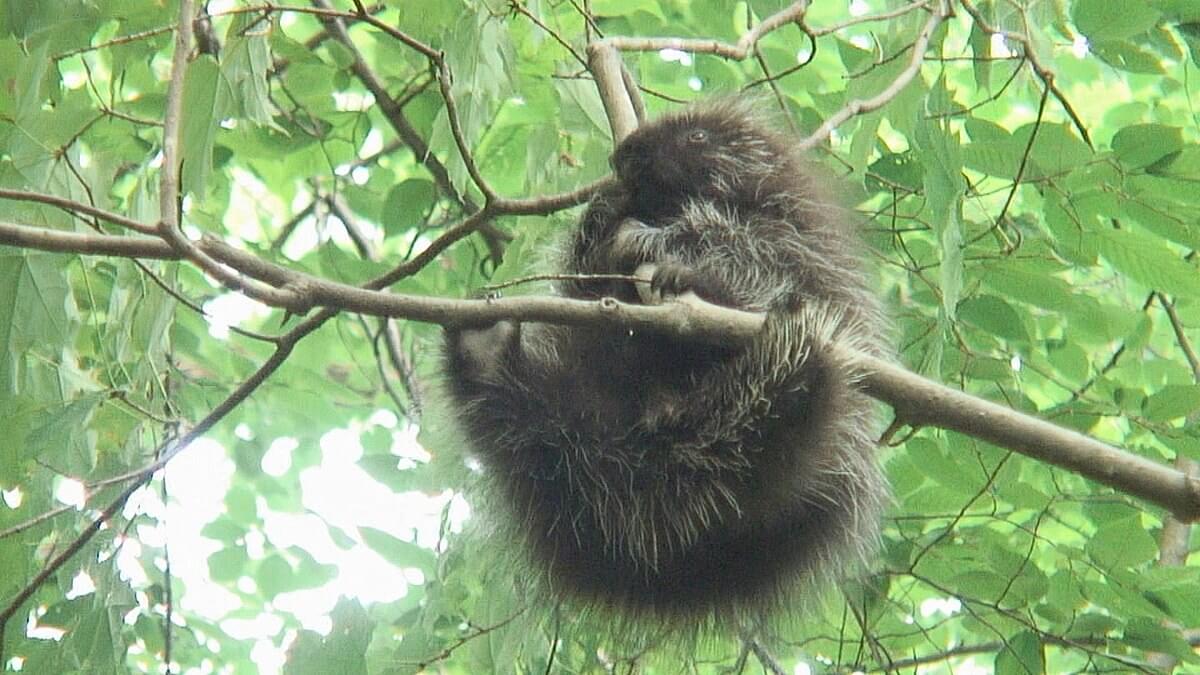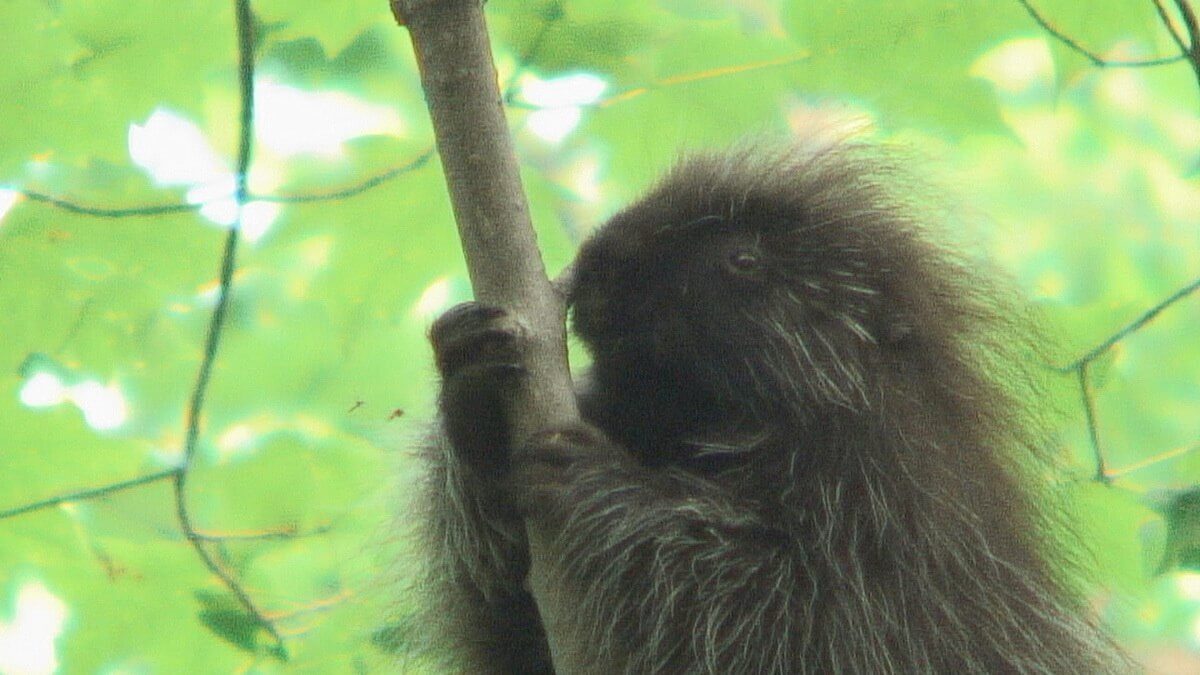A Young Porcupine Near Dwight, Ontario
Bob and I had put in a very full day in Algonquin Provincial Park on the last day of our visit to that wilderness area so were heading home to Toronto late in the afternoon. We had no reason to stop again until we got home…that is until we spotted a young Porcupine hobbling across the pavement of the South Portage Road near Dwight, Ontario.
I was ill-prepared to snap more photos having placed my camera on the backseat of the car, but it was within reach so I was able to grab this quick picture of the Porcupine as it contemplated scaling a massive tree trunk at the side of the road. The Porcupine was a young one, and it seemed that he deemed the tree too large for its emerging climbing skills…
for it scampered a little deeper into the woods and promptly climbed up a young sapling with a trunk about 3 inches (7.5 cm) in diameter. That is the usual defensive behaviour of a Porcupine, although they will sometimes hide under a rock or a log. Porcupines are shortsighted and slow moving so it is not difficult to approach them. Within minutes, both Bob and I had clambered out of the car and made for the low bank along the shoulder of the road. We planned to get a closer look at the treed Porcupine.
Porcupines are the prickliest members of the rodent family, which also includes capybara and beavers, with Porcupines being the third largest rodents in the world. Those animals found in the U.S. and Canada are North American Porcupines, and they are the largest of all species of Porcupine. A young Porcupine is ready to live on its own at the age of two months, and this little fella could not have been much older than that judging by its size. It was only about 24 inches (61 cm) long. An adult can be up to 3 feet (91 cm) long not including its tail.
At birth, a Porcupine’s skin is covered with sharp yet soft quills that are hidden in dense black hair, but within hours, the quills harden and are able to be lifted into defensive position. When upright, the quills are a persuasive deterrent to predators especially considering there are about 30,000 of them on a Porcupine’s body, and those are found only on the animal’s back, sides and tail. If a Porcupine is feeling threatened, it will either lash its tail, bristle its quills or chatter its teeth. This little specimen exhibited none of those warning signs but offered instead to climb higher up the sapling. It was comedic watching its efforts because the thin trunk of the young tree bowed lower and closer towards the ground.
Porcupines are quite endearing to look at with their short, blunt noses, small eyes, and little round ears that are barely visible above the thick hair. Looking at their claws gives one a different impression of these squat, humped animals because they are long and curved. To better equip a Porcupine for climbing, one digit on each hind foot has been replaced by a wide movable pad that enables the animal to grasp branches more firmly. Considering that these animals spend a good share of their time in trees, it is also helpful that their tails can be used for gripping, too.
Bob and I got a good laugh when the bent sapling suddenly lurched to the side under the Porcupine’s weight causing the poor critter to nearly lose its grip. For a few brief moments, the situation was tenuous. Could it hold on? Porcupines do fall out of trees fairly often but it is usually because they are tempted by the tender buds and twigs at the ends of the branches. That is why Porcupines have evolved to have antibiotics in their skin to combat infection when pierced by their own quills as they hit the ground. This Porcupine did manage to achieve a solid perch again.
Porcupines are one of only three North American mammals to have black and white hair with the other two being skunks and wolverines. These three species are, for the most part, nocturnal, and their distinct colouring advertises who and where they are in the darkness. Bob and I spent a short while photographing the Porcupine then had to give up our observations in favour of continuing our journey. Hopefully, this little Porcupine managed to keep out of harm’s way until the cover of darkness lent an advantage to its explorations. Seeing it had been one last treat in a string of wonderful animal sightings that weekend.
Frame To Frame – Bob and Jean


